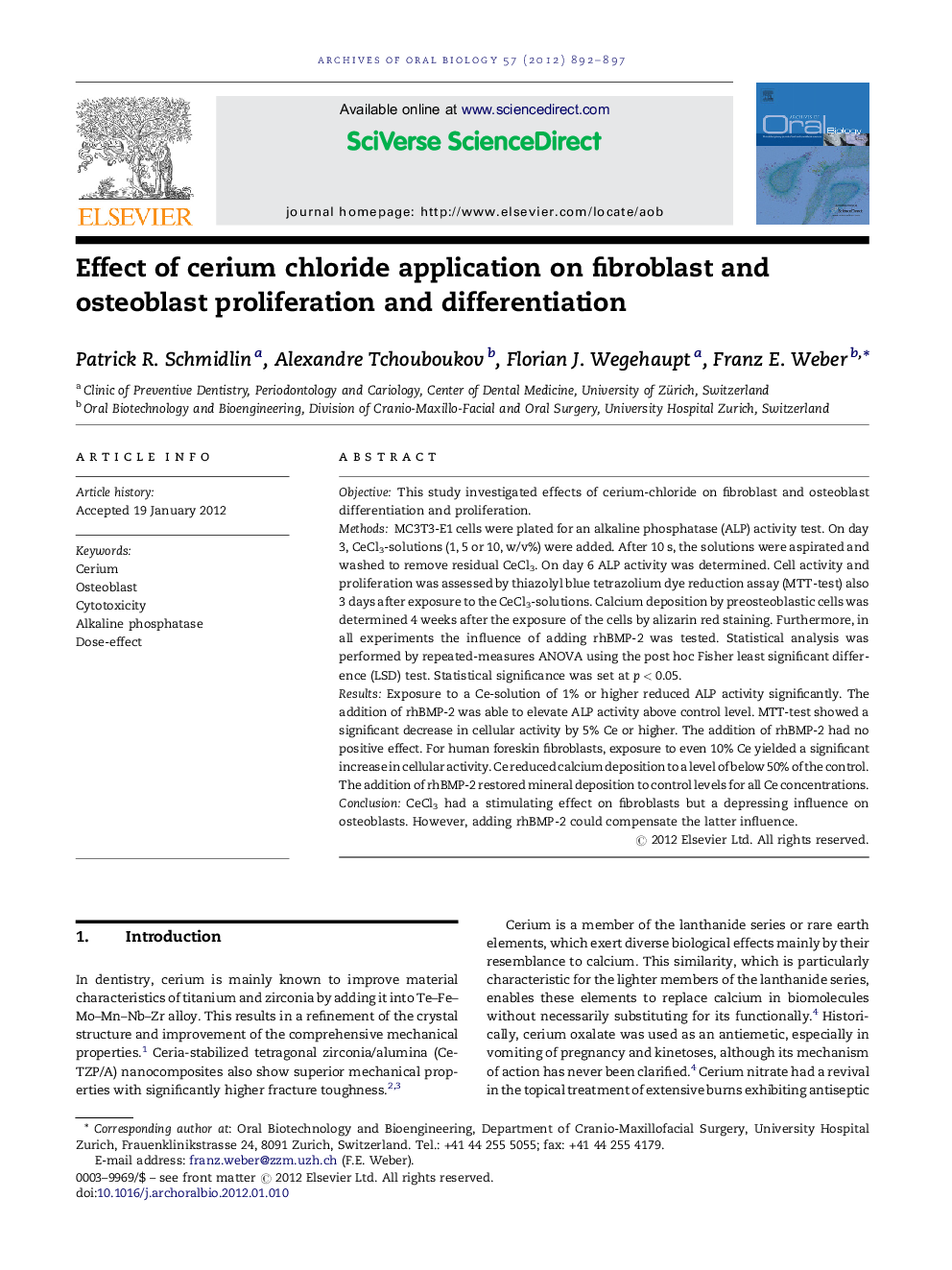| Article ID | Journal | Published Year | Pages | File Type |
|---|---|---|---|---|
| 6051851 | Archives of Oral Biology | 2012 | 6 Pages |
ObjectiveThis study investigated effects of cerium-chloride on fibroblast and osteoblast differentiation and proliferation.MethodsMC3T3-E1 cells were plated for an alkaline phosphatase (ALP) activity test. On day 3, CeCl3-solutions (1, 5 or 10, w/v%) were added. After 10 s, the solutions were aspirated and washed to remove residual CeCl3. On day 6 ALP activity was determined. Cell activity and proliferation was assessed by thiazolyl blue tetrazolium dye reduction assay (MTT-test) also 3 days after exposure to the CeCl3-solutions. Calcium deposition by preosteoblastic cells was determined 4 weeks after the exposure of the cells by alizarin red staining. Furthermore, in all experiments the influence of adding rhBMP-2 was tested. Statistical analysis was performed by repeated-measures ANOVA using the post hoc Fisher least significant difference (LSD) test. Statistical significance was set at p < 0.05.ResultsExposure to a Ce-solution of 1% or higher reduced ALP activity significantly. The addition of rhBMP-2 was able to elevate ALP activity above control level. MTT-test showed a significant decrease in cellular activity by 5% Ce or higher. The addition of rhBMP-2 had no positive effect. For human foreskin fibroblasts, exposure to even 10% Ce yielded a significant increase in cellular activity. Ce reduced calcium deposition to a level of below 50% of the control. The addition of rhBMP-2 restored mineral deposition to control levels for all Ce concentrations.ConclusionCeCl3 had a stimulating effect on fibroblasts but a depressing influence on osteoblasts. However, adding rhBMP-2 could compensate the latter influence.
